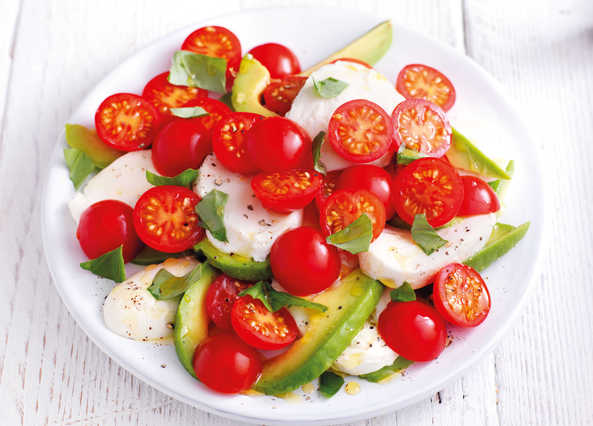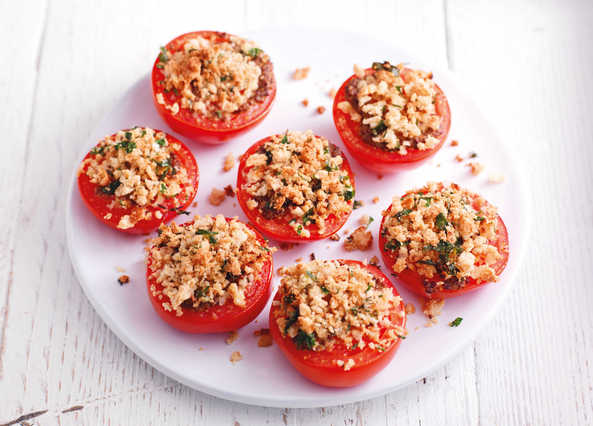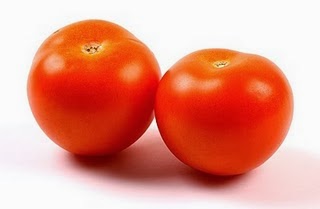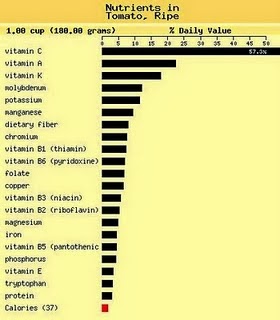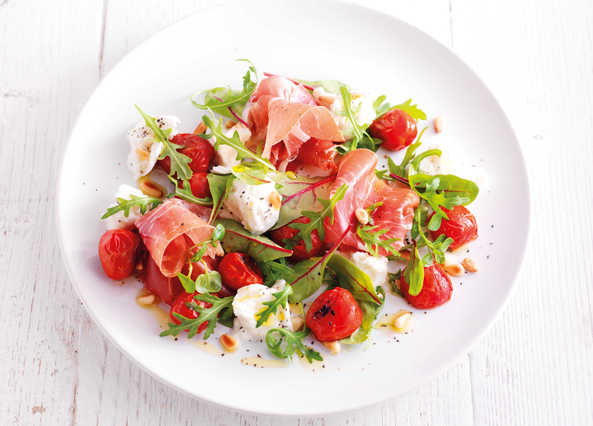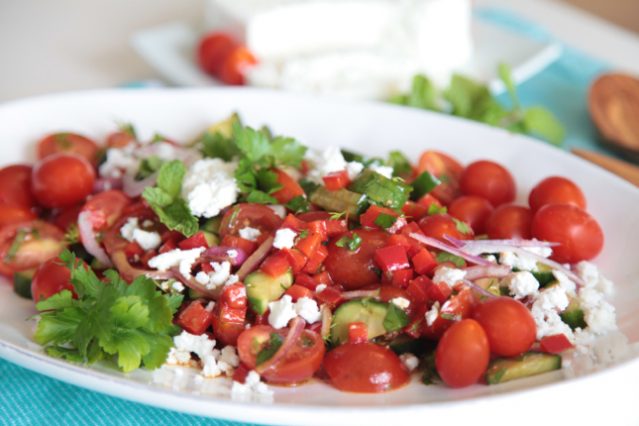
Tomato:
Pronounce it: toe-mart-oh
A member of the nightshade family (along with aubergines, peppers and chillies), tomatoes are in fact a fruit, but their affinity for other savoury ingredients means that they are usually classed as a vegetable.
Tomatoes originated in western South America, crossed the Atlantic to Spain with the conquistadors in the 16th century, but only finally caught on in northern Europe in the 19th century. Today they're one of the most important ingredients available, and are especially indispensible in Mediterranean cookery. The skin, flesh and seeds can all be eaten, but the green leaves are toxic, so should always be discarded.
The number of varieties run into the thousands, and they vary in size from the huge beefsteak to tiny cherry tomatoes, but most have a sweet, gently tangy flavour and are good both raw and cooked.
Availability:
All year round, with a constantly changing line-up of varieties from season to season. The British tomato season runs from June to October. In winter, you could use more canned tomatoes to save on food miles (the environmental cost of food transportation).
Tomatoes are easy to grow at home, especially the smaller tumbling varieties.
Choose the best:
Go for firm tomatoes with wrinkle-free skins and a noticeable tomato smell. Tomatoes have the best, sweetest flavour if they've been allowed to ripen on the vine before they've been picked but, if you buy under-ripe tomatoes, you can redden them by keeping them in a brown paper bag at room temperature, or on a windowsill.
The sooner you eat a ripe tomato after it's been picked, the better it will taste, so try to seek out locally grown tomatoes if possible. The leafy tops are a good sign of freshness; they should be perky, rather than wilted. Avoid any tomatoes that show signs of mould.
The type of tomato you buy depends on what you intend to do with it. Here's a run-down of some of the most common types.
Beefsteak: these are the biggest tomatoes, and have a meaty texture with a sweet, mellow flavour. They are good for salads, grilling or stuffing.
Salad (or round): this is the traditional British tomato - it's a good all rounder, but really needs to be ripe to get the best flavour.
Cherry: small and very sweet, cherry tomatoes are pricier than salad tomatoes but their intense flavour is worth the extra cash. They are good in salads, pasta sauces or roasted.
Plum: Available as a baby or full-grown tomato, plum tomatoes have an oval shape, with a rich flavour and comparatively few seeds. Good for making sauces and stews.
Green: there are two types of green tomato. One is unripe, and is quite tart but good for chutneys, or fried. The other is a variety that stays green when ripe, has a tangy flavour and is good in salads or, again, fried.
Yellow: these ripen to a golden yellow colour, and are good in salads, salsas and chutneys.
Prepare it:
Wash, and then leave whole or halve, quarter, slice, chop or dice, as required. If you want to remove the skins before making them into a sauce, cut out the green stalk and core at the top of the tomato, cut a small, shallow cross at its base, then put them in bowl and cover with boiling water. Leave to stand for 30 seconds, then drain. When they are cool enough to handle, pull away the loosened skin. Tomatoes are also available tinned, pulped, purr'eed and juiced.
Store it:
Chilling tomatoes mutes their flavour so, unless they are very ripe, they should be stored at room temperature. If you won't be eating ripe tomatoes for a couple of days, put them in the fridge in a perforated bag, but take them out of the fridge for about 30 minutes before eating, so that they can warm up. If you don't use a tin of tomatoes all in one go, transfer the remainder to a non-metal, airtight container and store in the fridge - it will last for around two days.
Cook it:
Roast whole (15-20 minutes). Halve and grill (3-4 minutes). Slice and fry (2-3 minutes on each side). Use in sauces, soups, stews, salads.
Above details taken from here http://www.bbcgoodfood.com/glossary/tomato
How about this recipe idea?
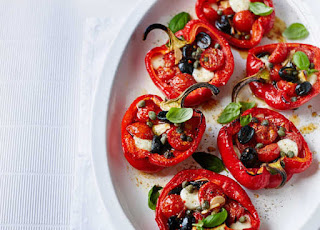
Sicilian Baked Red Peppers with cherry vine tomatoes
recipe idea can be seen here
http://thelowcarbdiabetic.blogspot.co.uk/2016/02/sicilian-baked-red-peppers.html
recipe idea can be seen here
http://thelowcarbdiabetic.blogspot.co.uk/2016/02/sicilian-baked-red-peppers.html
Surely tomatoes are great wherever you live, and if you can grow your own, even better. Why not put them on your shopping (or growing) list soon
All the best Jan
N.B. Always remember if you are diabetic, or have any food allergies, or underlying health issues these must always be taken into account, when trying out recipe ideas etc. If you are a diabetic and not sure how certain foods may affect your blood sugars, test is best, i.e. use your meter.



